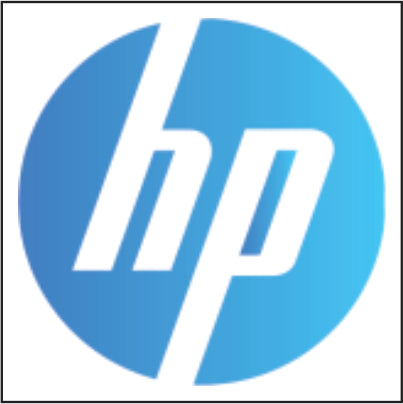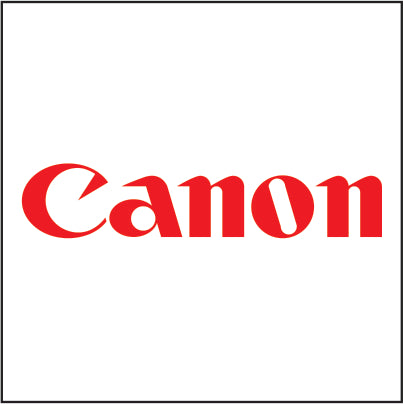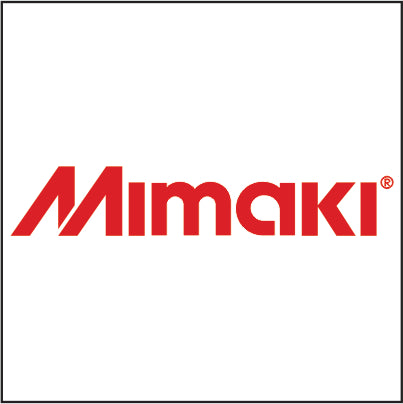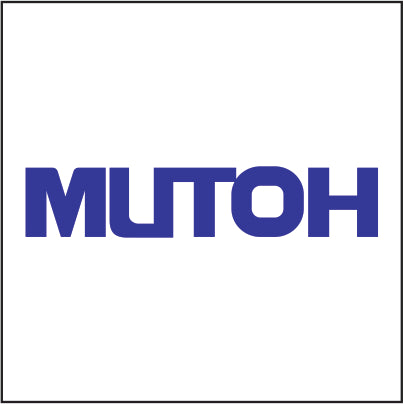Roland vs Mimaki Wide-Format Printers: Which Is Right for You?
Choosing between Roland vs Mimaki Wide-Format Printers can feel like a high-stakes decision. Both brands are giants in the wide-format printing industry with loyal followings. I remember the first time I faced this choice – it was exciting and overwhelming. How do you decide which printer fits your business needs best? In this post, we’ll break down the key differences (no bias, just real-world insights) to help you make an informed decision. Whether you run a bustling sign shop or a growing print business, this guide will give you practical advice on selecting the right wide-format printer for you.
Roland vs Mimaki Wide-Format Printers: A Head-to-Head Overview
Let’s start with an overview of these two contenders. Roland vs Mimaki Wide-Format Printers is a common debate among print professionals, and for good reason. Both Roland and Mimaki are renowned Japanese manufacturers know

n for quality and innovation. But they have distinct strengths that might sway your decision.
-
Mimaki: A leader in cutting-edge technology, Mimaki offers a broad range of printers from eco-solvent roll-to-roll machines to large UV The brand is especially strong in advanced applications – think UV printing, specialty inks (like white and clear), and high-detail output. Mimaki printers are favored for industrial-grade features and automation options that support high-volume production. The trade-off? Mimaki’s systems can have a slightly steeper learning curve for new users, as they pack in many features and settings to maste
-
Roland: Roland has built its reputation on user-friendly, reliable print-and-cut systems. This brand specializes in eco-solvent

printers and integrated printer/cutter combos popular for making vinyl signs, vehicle wraps, decals, and apparel graphics. Roland machines are known f
or their durability and consistent performance. They often come virtually ready-to-run out of the box, with intuitive software that newbies appreciate. If you’re a smaller shop or just starting out, Roland’s ease of use and strong customer support community are big advantages. Just note, Roland may not have some of the ultra-specialized features that Mimaki offers at the high end.
In short, Roland vs Mimaki Wide-Format Printers each bring something to the table. Mimaki shines for innovation and versatility, while Roland excels in simplicity and dependability. Now, let's dig deeper into specific aspects like ink technology, cutting features, and more.
Roland vs Mimaki Wide-Format Printers: Ink Technologies and Media Compatibility
One crucial factor in the Roland vs Mimaki Wide-Format Printers matchup is the type of ink and media each brand supports. Both offer eco-solvent ink printers – the workhorses for banners, vehicle wraps, and outdoor signage – but Mimaki pushes further into other ink technologies.
Eco-Solvent vs. UV-Curable: Roland’s product line has historically focused on eco-solvent ink. These inks produce vibrant, durable prints (perfect for vinyl and films) and are relatively easy to work with. Mimaki also offers excellent eco-solvent models (for example, their JV and CJV series), but additionally they are a pioneer in UV-curable printing. Mimaki’s UV printers use inks that cure under UV light, allowing you to print directly on rigid substrates like glass, metal, or wood. If your business needs include printing on rigid boards or specialty materials, Mimaki gives you that capability in-house, whereas Roland’s UV offerings are more limited in scope.
Ink Options: Mimaki provides a wide array of ink formulations to suit different jobs. For instance, Mimaki Solvent Inks (such as their SS21 series) are a staple for long-lasting outdoor graphics with rich color and strong adhesion. They also lead in UV-curable options — Mimaki UV Ink sets allow certain Mimaki machines to print on acrylic, metal, and other surfaces with inks that harden instantly under UV light. Roland’s printers mainly use eco-solvent inks (and some dye-sublimation inks on specific models for textiles), which are fantastic for flexible media but not designed for direct-to-rigid printing. So ask yourself: do you need the extra versatility of UV printing or are you focused on banners, vinyl, and fabrics? If you foresee needing the broadest media compatibility, Mimaki might edge ahead.
Color Gamut and Special Inks: Both brands deliver high print quality and color vibrancy. Mimaki, however, often highlights its specialty ink capabilities. Many Mimaki models can be configured with additional ink channels for light cyan, light magenta, orange, white, clear varnish, etc., enabling a wider color gamut or special effects. Roland’s eco-solvent printers typically stick to CMYK (plus light colors or white/metallic in some cases) and emphasize reliable, repeatable color output. If printing things like backlit signs with dense blacks or adding clear coat textures is on your wish list, check if a Mimaki model supports it. On the other hand, for straightforward sign and apparel printing, Roland’s ink sets are more than sufficient and are known for excellent color consistency across long production runs.
Roland vs Mimaki Wide-Format Printers: Cutting and Workflow Features
Another key aspect of wide-format printing is cutting and finishing. Both Mimaki and Roland offer printer/cutter combo machines that can print and then contour-cut decals or graphics without needing a separate device. Let’s compare how they fare in cutting capability and overall workflow:
-
Integrated Cutting Hardware: Roland really made its name with integrated print-and-cut devices (like the famous TrueVIS series). These machines are prized for seamlessly going from print to cut, ideal for making stickers, heat transfers, and more with minimal user intervention. Mimaki also offers integrated print/cutters in its lineup (such as the CJV series). In fact, Mimaki introduced some advanced features in their cutters: for example, newer Mimaki printer-cutters often include multiple pinch rollers to hold media firmly, which is useful when cutting thicker materials or very long prints. Roland typically uses two pinch rollers on their models – perfectly fine for standard vinyl, but Mimaki’s three-roller system provides extra grip that can improve accuracy on challenging media.
-
Cutting Software and Workflow: Roland’s cutting workflow through its VersaWorks software and Roland CutStudio (for standalone cutters) is known to be straightforward and beginner-friendly. You import your design, define cut lines, and the software handles the rest with ease. Mimaki’s software (RasterLink for printing and FineCut plugin for cutting) offers more advanced control. For instance, setting up crop marks and cut lines can be more automated in Mimaki’s software once you learn it. An experienced user might appreciate Mimaki’s workflow efficiency – you can create a cut contour in just a few clicks and even add intermediate registration marks for long graphics to maintain precision. By contrast, some users find they need a few extra manual steps to achieve the same with Roland’s standard software. If you routinely do large batches or very long prints that need cutting, these workflow refinements can save time.
-
Accuracy on Long Runs: When it comes to cutting lengthy prints (say a series of decals running several meters), small inaccuracies can creep in. Mimaki printers have a feature that compensates for media feed discrepancies over long distances, helping keep cuts aligned even at the far end of a print. Roland’s system, while highly reliable for most jobs, doesn’t have a specific long-run correction feature – so on extremely long prints, you might see a millimeter or two of drift in cut alignment. For most daily work this isn’t an issue, but it’s worth noting if you plan to push the limits of length.
Overall, both brands produce excellent print-and-cut results for typical jobs. Roland’s approach is simplicity and trustworthiness, whereas Mimaki leans into precision and advanced control. If cutting precision is a top priority for you, it’s worth reading an expert deep-dive comparison – check out How Do the Cutting Capabilities Compare Between Mimaki vs. Roland?.

What is the difference between Mutoh and Mimaki?
So far we’ve focused on Roland and Mimaki, but you might also be curious about another competitor: Mutoh. What is the difference between Mutoh and Mimaki? Both Mutoh and Mimaki are respected Japanese manufacturers in the wide-format arena, and they actually share a lot in common (for example, both often use Epson-manufactured print heads and can achieve similar high print quality). However, there are a few noteworthy differences:
-
Ink Flexibility: Mimaki printers generally require you to use Mimaki’s own branded inks or compatibles specifically made for Mimaki. Mutoh, on the other hand, designs many of its printers with an open ink option – Mutoh machines have unlock codes or firmware settings that let you use third-party inks more freely. This means if you want the freedom to shop around for inks (potentially to save costs), Mutoh gives you more leeway, whereas Mimaki expects you to stick with their ink systems for optimal performance.
-
Color Configuration: Some Mutoh models allow up to 8-color setups (for instance, adding light colors or orange/green inks for extended gamut) especially in certain configurations like their water-based or dye-sublimation printers. In comparable Mimaki models, you might be limited to 6 colors unless you step up to higher-end units. In practice, both brands produce vibrant colors, but Mutoh might offer a slight edge if you specifically need a printer configured with a broader color gamut out of the box.
-
Maintenance and Parts Replacement: Wide-format printers need routine maintenance – things like replacing print heads, capping stations, and wipers over time. Users often report that Mimaki printers are a bit more DIY-friendly for maintenance; the machines are built in a way that a technically inclined operator can replace many components on their own by following manuals. Mutoh printers, while certainly serviceable, can be a bit trickier for self-service, sometimes requiring an authorized technician for certain part replacements or calibrations. If you prefer doing your own upkeep, you might appreciate Mimaki’s design in this regard.
-
Special Features: Mutoh has pioneered a technique called Intelligent Interweave (i²) or “wave printing” to reduce banding. Banding (those faint horizontal lines in prints) is a common issue in inkjet printing when passes overlap inconsistently. Mutoh’s wave printing lays down ink in a wave-like pattern to virtually eliminate banding, a unique feature Mutoh owners often brag about. Mimaki printers do not have this exact feature (each brand has its own way to manage print pass overlap, but Mutoh’s is distinctive). So if you’ve struggled with banding on other printers, Mutoh’s approach could be appealing.
In summary, Mimaki vs Mutoh is another matchup of two quality brands. Mimaki might win for easier maintenance and cutting-edge ink options (especially in UV and specialty inks), while Mutoh wins for flexibility and some clever print tech. If your decision comes down to these two, consider what matters more: the freedom to use various inks and the anti-banding tech (Mutoh) versus access to Mimaki’s broad ink lineup and slightly more user-serviceable design.
What are the disadvantages of wide-format printers?
Wide-format printers open up huge possibilities for your business – from printing massive banners to high-res posters – but it’s not all sunshine. It’s important to understand the disadvantages of wide-format printers as you plan your investment. Here are a few key drawbacks to keep in mind:
-
High Initial Cost: Professional wide-format printers are expensive compared to standard office printers. You’re paying for large print heads, robust frames, and advanced technology. The upfront cost (and financing payments, if leased) can be a barrier for small businesses.
-
Maintenance & Running Costs: These machines require regular maintenance and use a lot of ink and media. Ink cartridges or ink packs for wide-format printers are larger and pricier. Plus, parts like print heads or maintenance tanks eventually need replacing. Keeping a wide-format printer running in top shape is a significant ongoing expense.
-
Space Requirements: A wide-format unit can be physically large – often needing a dedicated space or room. They typically range from about 4 to 10 feet wide depending on the model, plus you need room to store rolls of media and allow for printing and finishing workflow. Not every office or shop has that kind of spare space.
-
Slower Output for Single Jobs: While wide-format devices can print big images, they aren’t as quick as small printers on a per-page basis. Printing a full-color 3’ x 6’ banner, for example, will take substantially longer than printing a dozen letter-size sheets on a desktop printer. For time-sensitive large projects, you’ll need to plan for these longer print times.
-
Specialized Media and Handling: Wide-format printers often require special media (rolls of vinyl, large sheets of foam board, etc.) and sometimes special handling. Switching media types can be more involved than just swapping printer paper. You might also need additional equipment like trimmers, laminators, or ventilation for solvent inks. This adds complexity to your production process.
Despite these disadvantages, businesses still invest in wide-format devices because the ability to produce large, high-quality prints in-house can outweigh the challenges. The key is to go in informed: budget for maintenance, allocate adequate space, and ensure you have the volume of work to justify the costs.

Conclusion: Choosing the Right Wide-Format Printer for Your Needs
Choosing between Roland and Mimaki ultimately comes down to understanding your own priorities – and it’s a bit like any big decision in business. Your print shop needs the right wide-format printer to ensure quality, efficiency, and happy customers.
So, which wide-format printer is right for you? Let’s boil it down to a few scenarios:
When to Choose Mimaki
-
You plan to print on a wide variety of materials, including rigid boards or unusual substrates, and need capabilities like UV printing or specialty inks (white, clear, etc.).
-
You want cutting-edge features (such as textured 3D ink effects or very high-resolution fine art quality) and you’re willing to invest time in learning and mastering a more advanced machine.
-
Your business is aiming for high-volume, industrial production where advanced automation and faster top-end speed will make a difference.
-
Future-proofing is important – you prefer a printer loaded with the latest technology so it can expand your service offerings (even if you don’t use all the features on day one).
When to Choose Roland
-
Your core products will be things like vinyl decals, vehicle wraps, banners, and apparel transfers – jobs well-suited to eco-solvent printing on flexible materials.
-
You value a simple, streamlined workflow. You or your team might be new to wide-format printing, and you want a machine that is forgiving and easy to operate with minimal training.
-
You have a small shop or limited space, so a compact all-in-one print/cut device that “just works” appeals to you more than a complex setup.
-
Consistent, reliable output is a top priority – you need a trusty workhorse that can produce batch after batch with uniform quality, and you’d rather not tinker with settings endlessly to get great color.
In the end, both Roland and Mimaki wide-format printers are highly capable – you really can’t go terribly wrong with either. It’s about matching the machine to your business. If you’ve identified that one brand’s strengths align more with your applications (maybe you’re excited about Mimaki’s UV inks, or you love Roland’s user-friendly approach), that’s likely the right choice. Take a close look at your typical print jobs, growth plans, and budget. The “best” printer will be the one that fits your workflow and helps you deliver quality work to your clients efficiently.







